My good friend had been encouraging me to accompany him to the Government Training Institute – Legion‘s Precision Rifle With Elevated Shooting Course. His urging finally produced a result and I signed up for the latest iteration of this training session, held at the GTI Legion training facility just outside of the Savannah River Site.
The buildings included in the GTI Legion complex were intended to be a part of the nuclear materials-producing SRS. Fortunately for those who enjoy shooting across great distances and from great heights, that purpose was never realized.

The Precision Rifle With Elevated Shooting Course was, to say the least, incredibly thorough. In fact, I can do no better than to quote from the GTI course description to illustrate the course’s complexity:
The Precision Rifle training class covers topics needed to effectively shoot mid to long ranges. The class will cover equipment, ballistics, range estimation, environmental conditions, and angular units of measure. If you are looking to make ethical shots on game at extended ranges, or just enjoy shooting targets at long range, this class will cover all the information necessary. The second day of the Precision Rifle With Elevated Shooting course is spent in our 135 foot / 10 floor elevated shooting tower that gives our students the opportunity to learn to shoot from high angles.
Though there were a number of competitive shooters along with trained military and law enforcement marksmen and women among my classmates, there were a few of us who were hunters or weekend range shooters.
Most significantly, some of the students had never practiced at the range, or attempted shots at game much beyond 300 yards. I for one was glad of the company of other neophytes, but I still experienced a good measure of performance anxiety as the course began.
Both days commenced with classroom instruction that included theory and practice. The first order of business included introductions and a detailed safety discussion.
Instructors, Chris Walker and Tommy Goodson spent considerable time helping us to re-think our shooting practices. From Tommy’s description of the “natural respiratory pause” (i.e. the point at which a shooter empties their lungs) . . .

…to Chris’s mantra that, from any shooting position, you must make sure you are “getting as much contact with the earth as possible,” all instruction was designed to help the students learn how to be as stable as possible when firing a shot.


I can say that, for me, the most revolutionary piece of instruction regarded how we should be mounting our rifle. For stability, and thus accuracy, we were told the rifle butt needed to be as centrally located as possible. In other words, the butt needed to be moved as close to the center of the chest as possible, rather than cupped just inside the shoulder pocket.

I had never heard of this concept/practice before. I thought maybe I was the only person in the classroom to have been totally ignorant of this, but when I asked my friend later, he told me he had never heard that advice before taking the course either. Live and learn.
Classroom time was also utilized to help us understand the problems we would encounter if we had improperly mounted riflescopes. This included the occurrence of a shadow along one edge, rather than seeing an entirely clear field of view.
I have experienced this quite often. Tommy explained that such misalignment of the eye with the riflescope would cause an impact shift of 180 degrees relative to the area of shadowing.

Both instructors utilized a number of tripod-mounted rifles to demonstrate how to adjust stances to best position yourself for shooting at targets located at various angles.

This particular information would be invaluable on day two when we would be shooting only from the rooftop of a 10-story building.
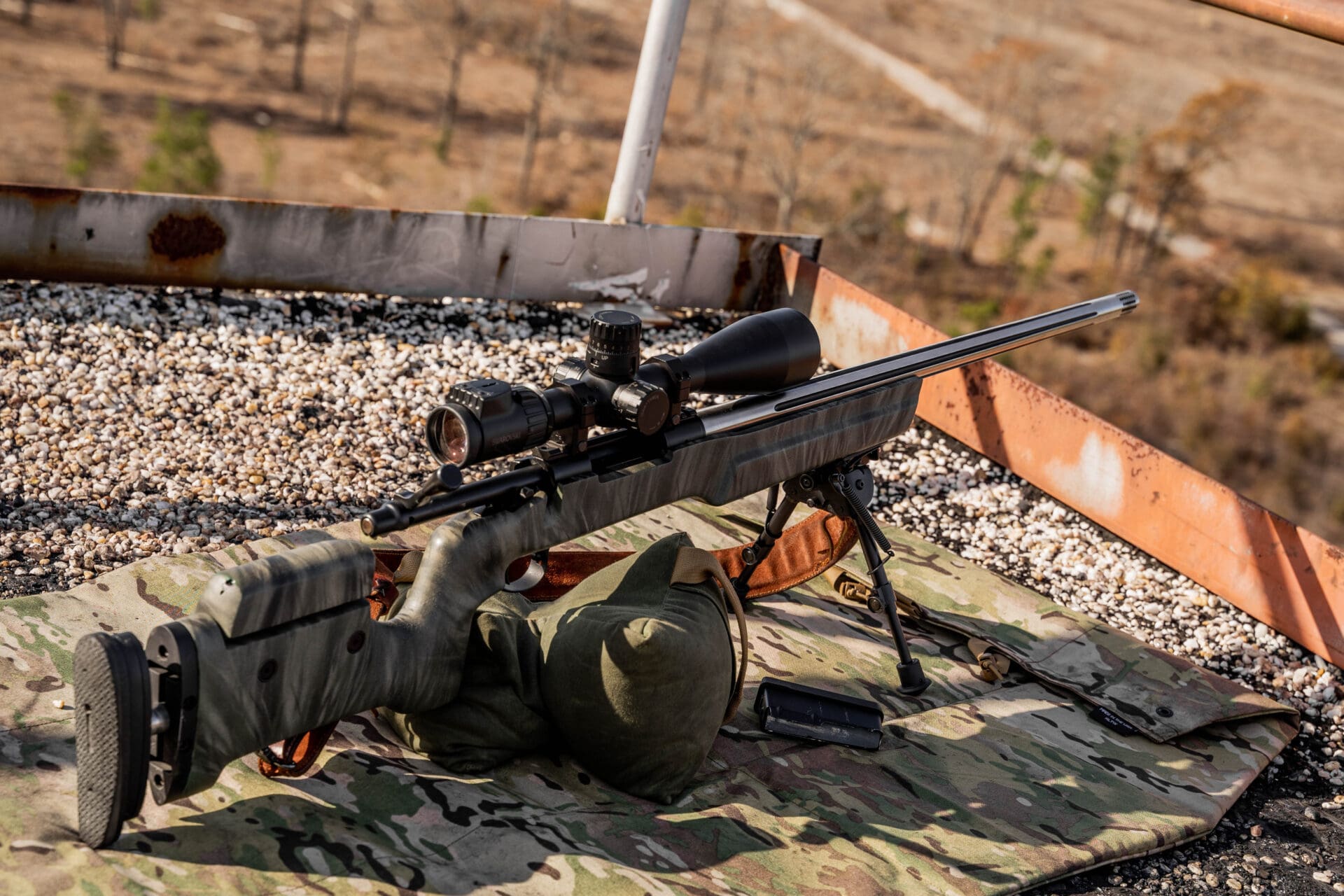
But, I’ve gotten ahead of myself.
With day one’s classroom time completed, we loaded into our vehicles for the drive to the range. Here is where I need to give a shout out to MG Arms for their extremely accurate, and powerful, MG Arms Banshee in .300 Winchester Magnum.

Unlike some of the other shooters, I never ran out of bullet energy for even the longest shots (700+ yards).

Also, the great ballistic coefficient and aerodynamics of the Sierra MatchKing BTHP bullets that capped the Federal Premium ammunition helped to reduce somewhat the adjustments necessary for elevation and windage. This may sound like an advertisement for both the Banshee rifle and the Federal ammunition, but the proof was in the impact.
Here’s what I wrote in my notebook, with Chris Walker as my spotter/witness: “450-yard target, two shots fired, two impacts; moved to 600-yard target, two shots, two impacts; moved to 700-yard target, two shots, two impacts, last dead-center!”

Firing from the prone position, using the techniques learned in the classroom from Chris and Tommy, mated with the rifle and ammunition specifically designed for long-range work, I was able to hit targets measuring 12 x 18 inches at ranges never before attempted by yours truly.
And I wasn’t alone. Up-and-down the line of shooters . . .
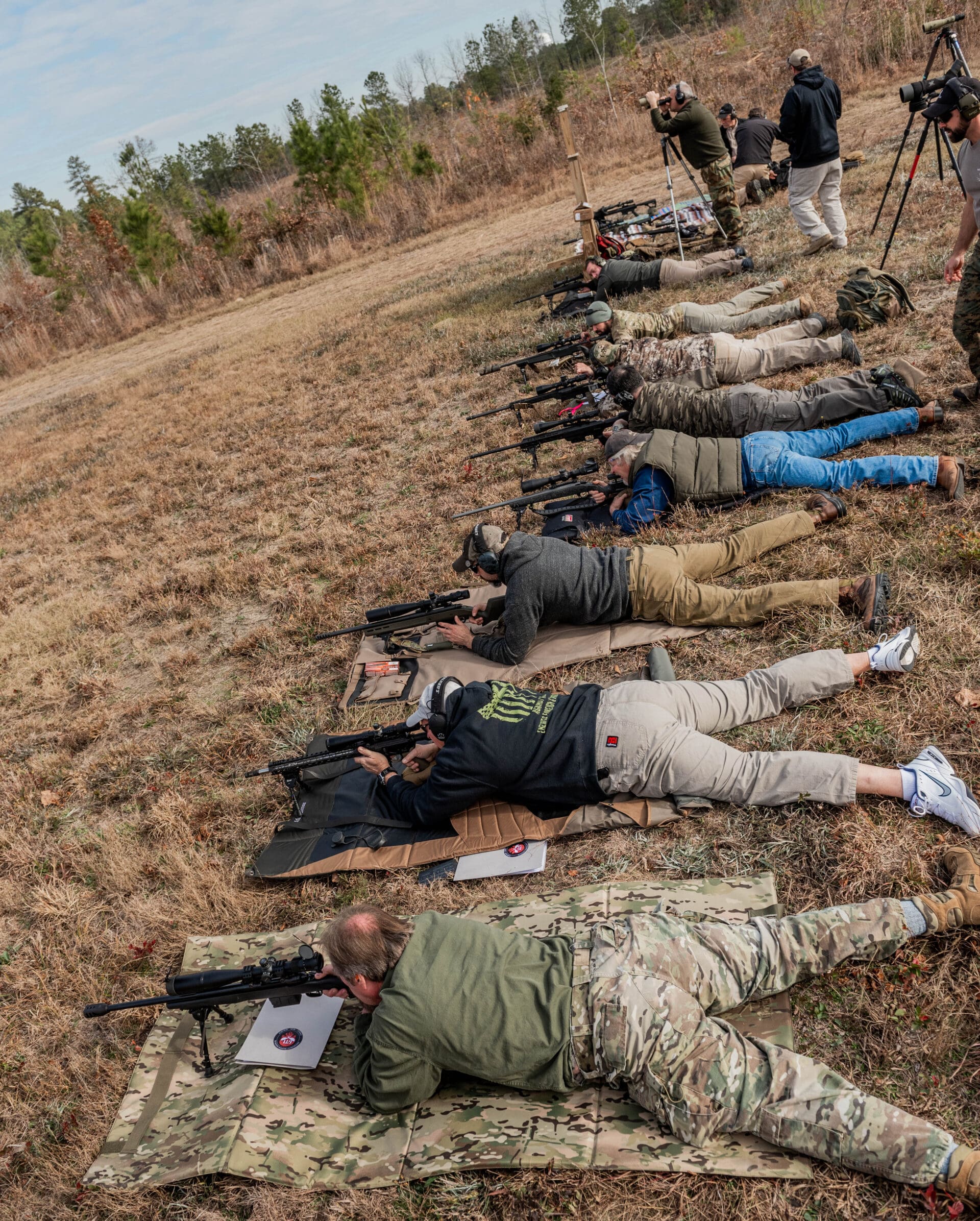
…Chris and Tommy were working with the participants, helping them score hit after hit on increasingly distant targets.
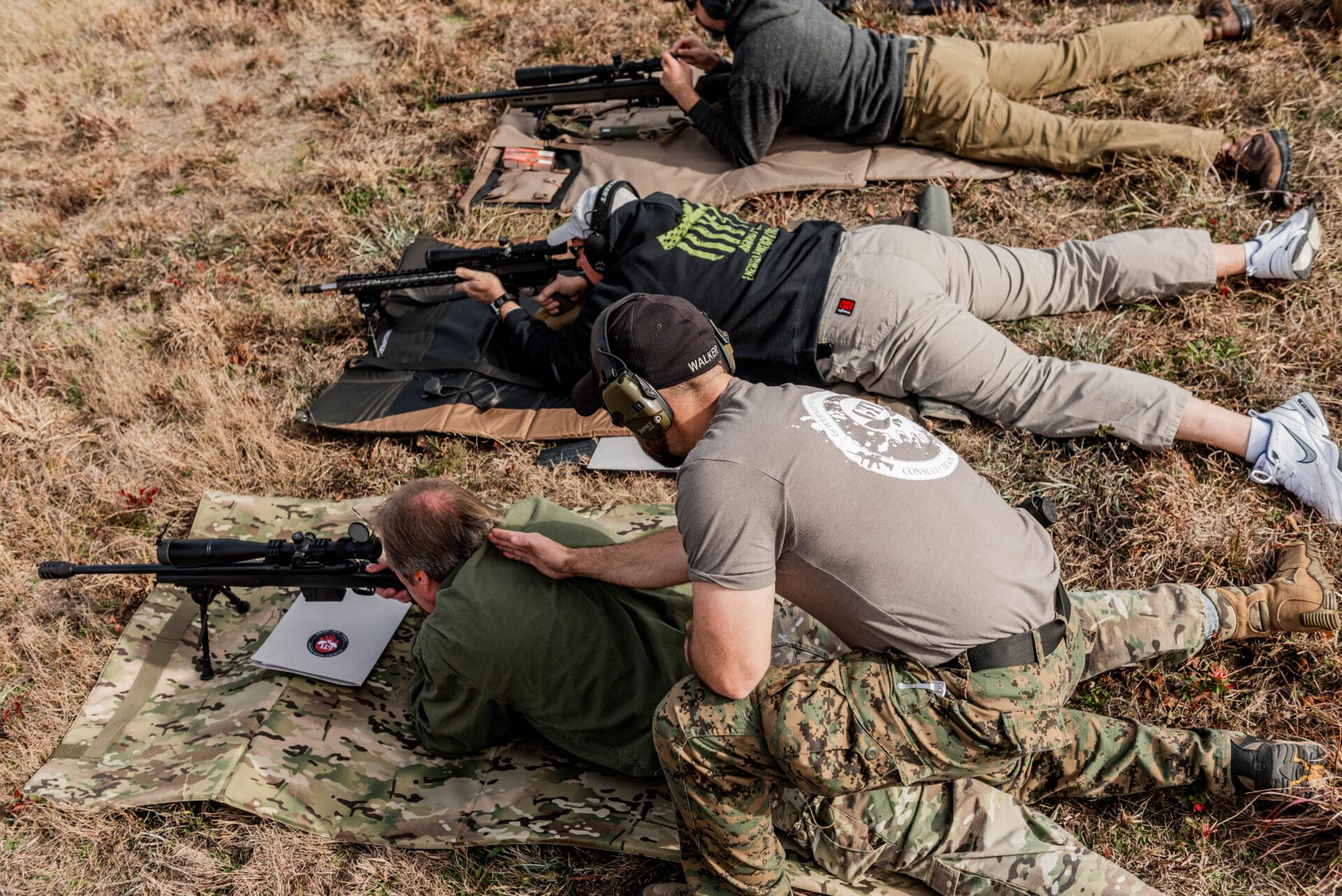
Much of the range session of day one was spent zeroing our rifles using paper targets at 100 yards.
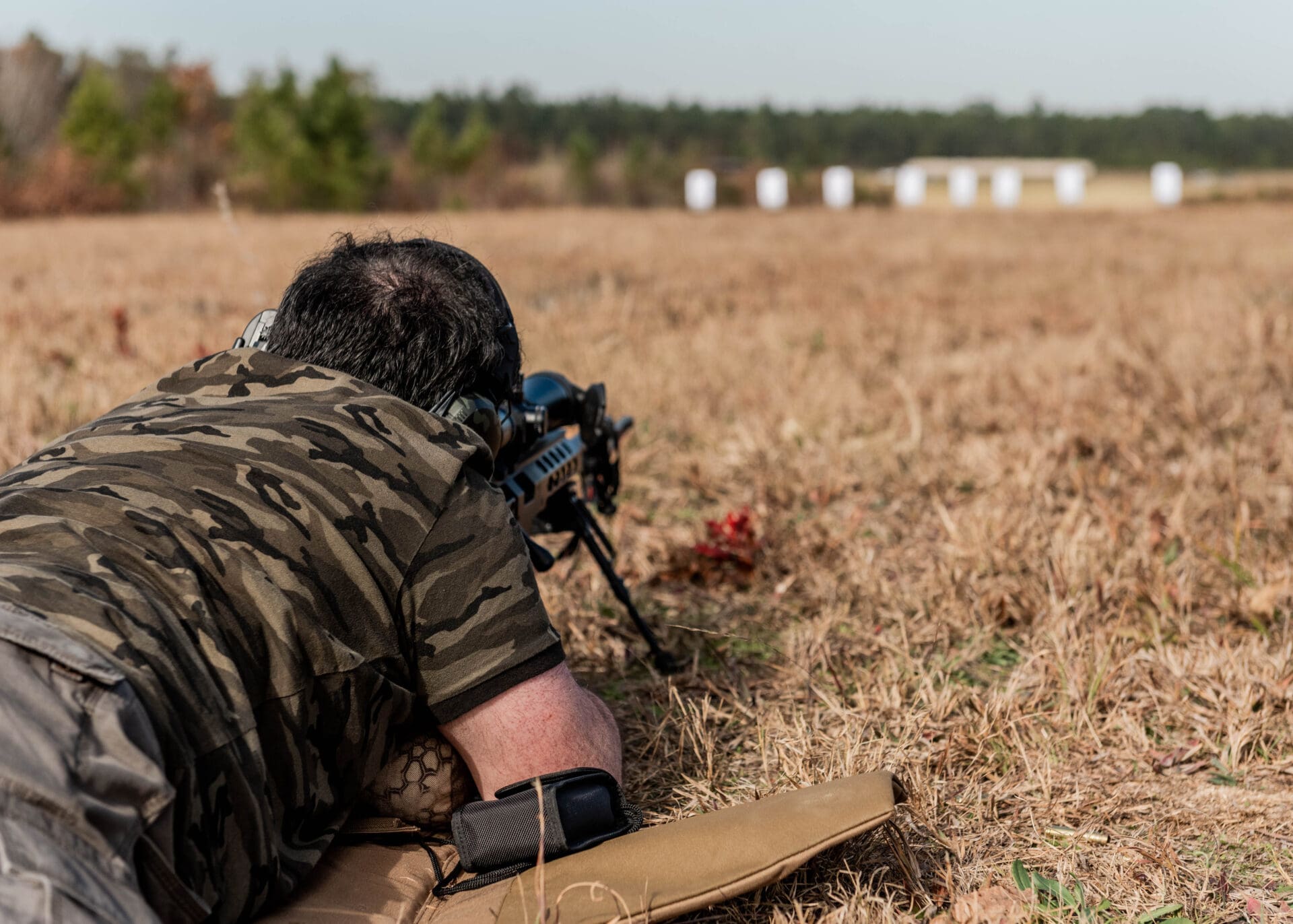

We also checked velocities with a chronograph . . .
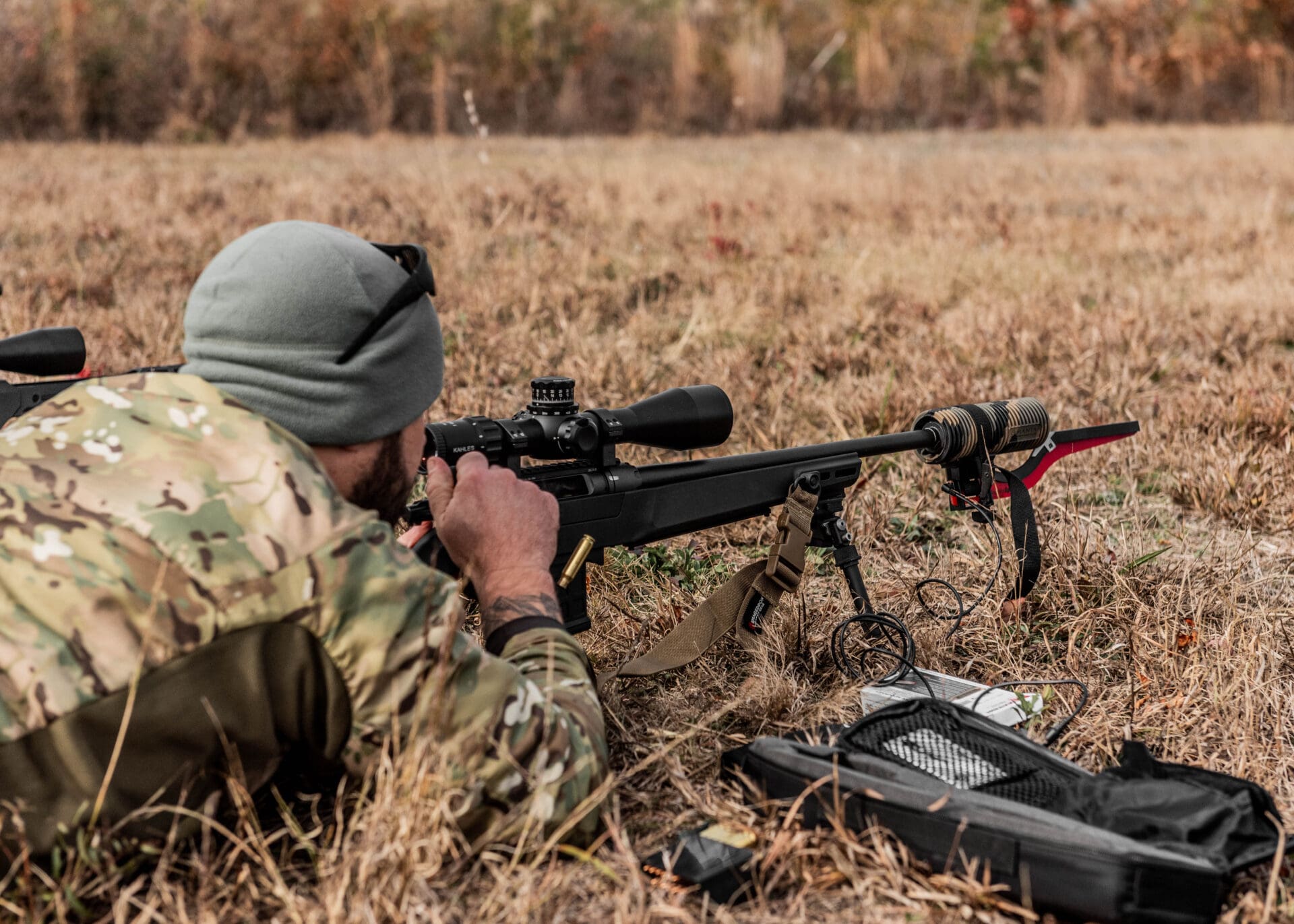
…and learned to use our various rangefinders (mine being a Vortex Fury HD 5000 model).
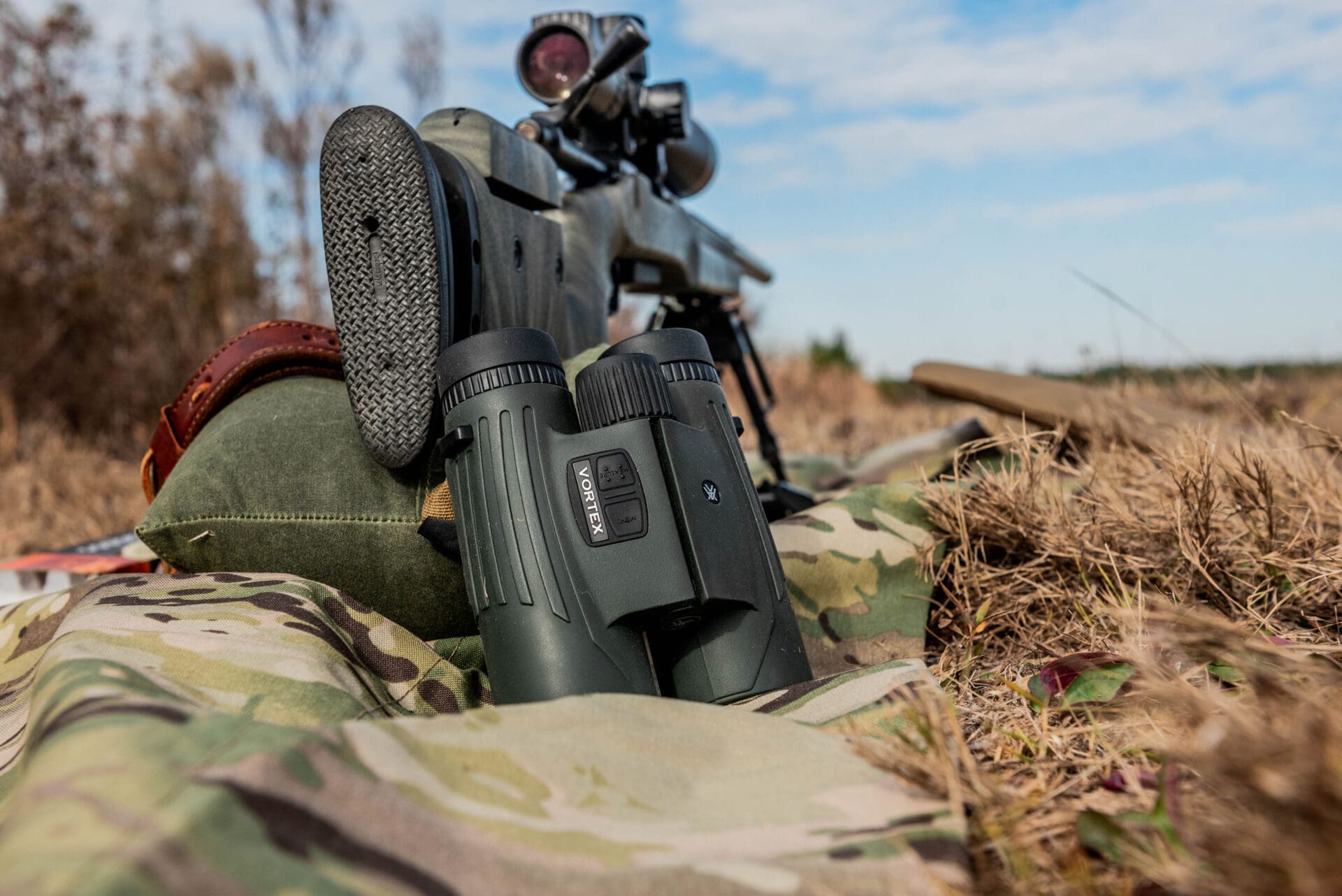
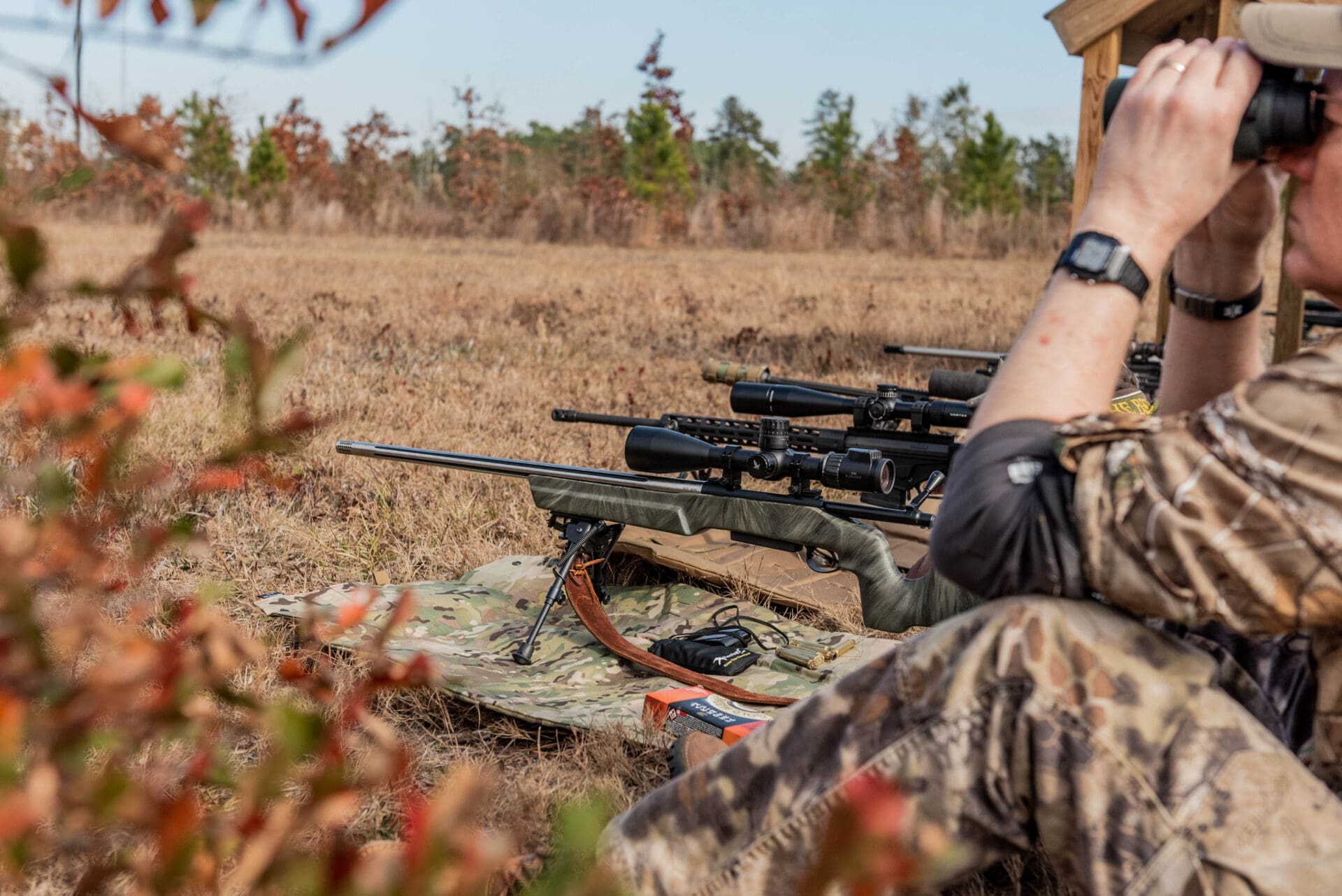
My pads and support bags were from Armageddon Gear (Ultralight Shooting Pad) and Waxed Canvas Optimized (Game Changer Support Bag).
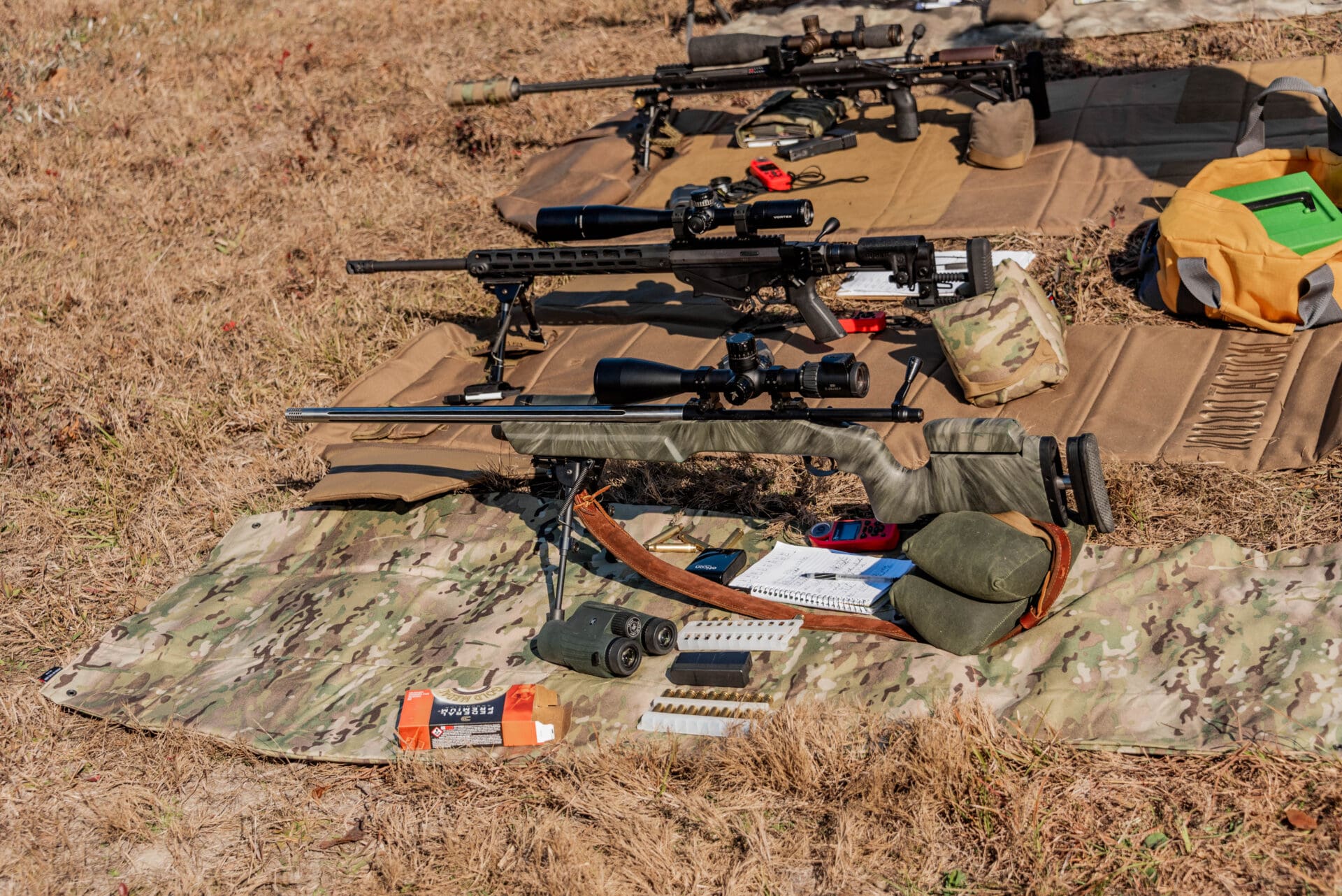
I can’t emphasize enough the difference it made for me to be able to depend on first rate gear.
A last piece of equipment that accounted for a great deal of the successful shots made by all of the participants was the Kestrel 5700 Elite Meter With Applied Ballistics (TTAG review here).
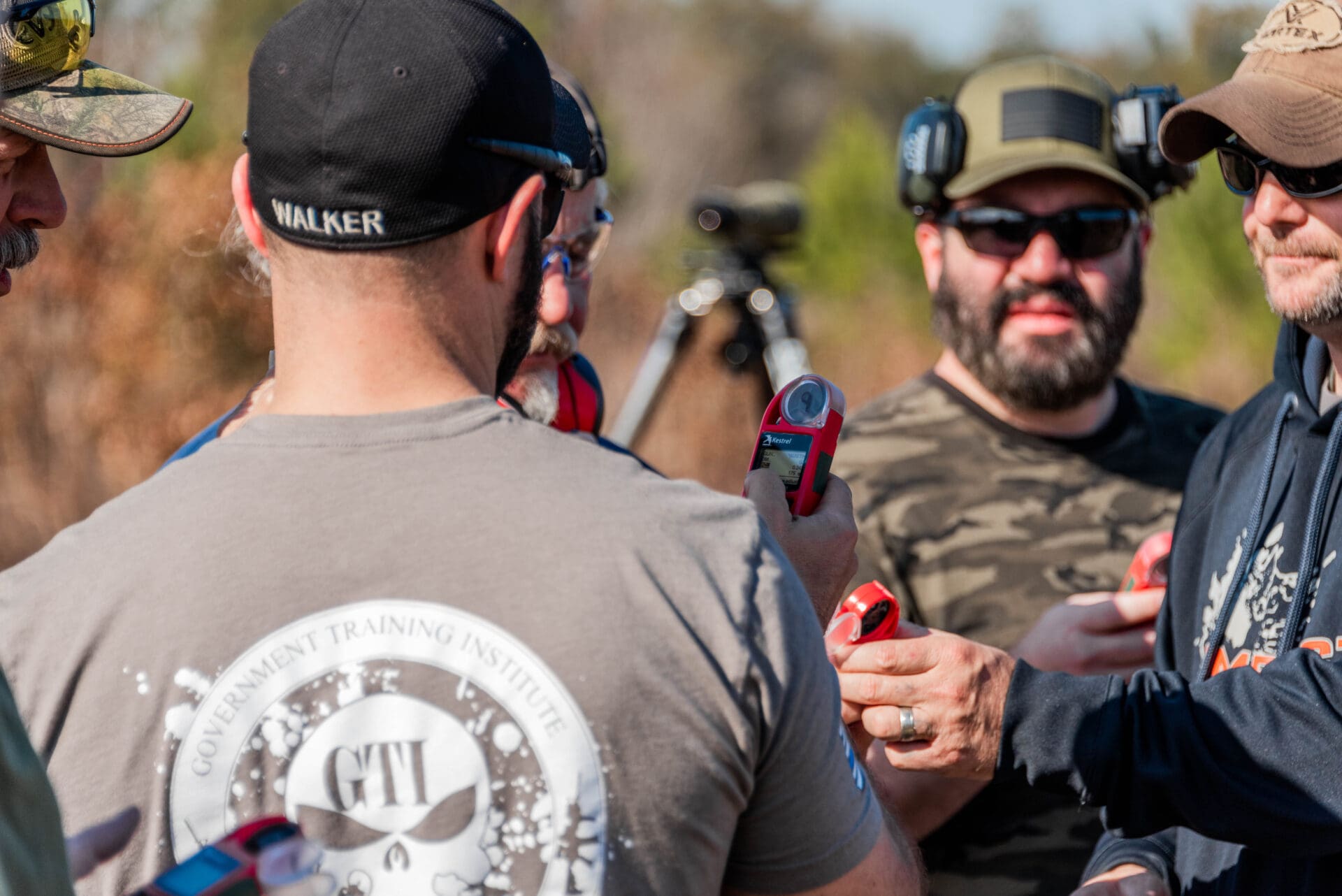
The magic of the Kestrel, at least for our application, was in those last three words. This small, handheld device allowed us to quickly (at least after some practice) calculate elevation and windage adjustments necessary to strike targets located at the various distances.
For me, in combination with the Vortex binocular/rangefinder, the Kestrel provided an accurate ballistic solution in seconds. It was amazing for this newbie.

We spent most of this first session firing from the prone position at increasingly distant targets. However, as sunset approached, we moved to the next stage of our training involving various obstacles. These included shooting from inclines . . .
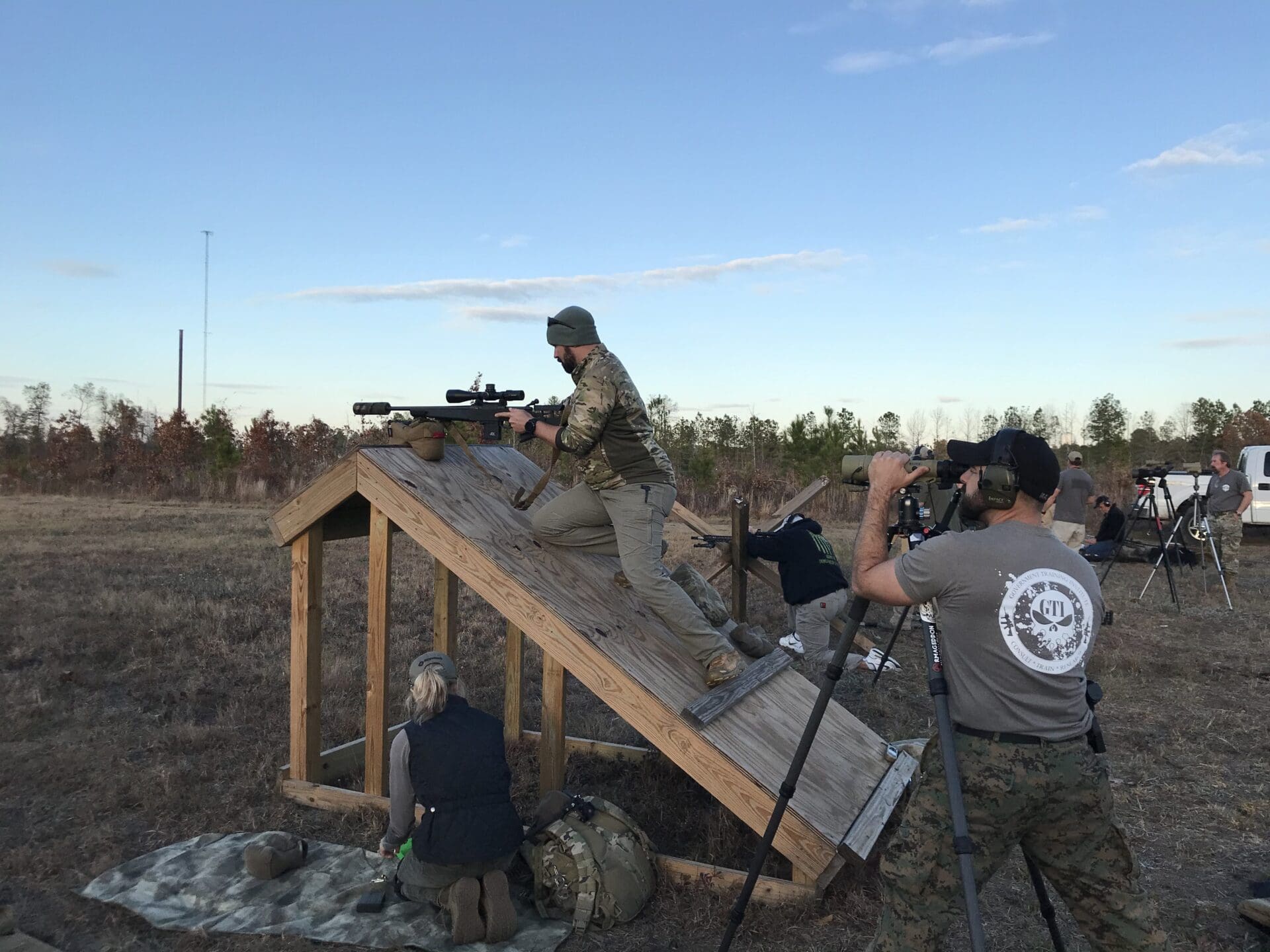
…simulated fences and walls, and even one barrier built in the shape of the so-called ‘hedge hogs’ encountered by the Allied troops on the beaches of Normandy.
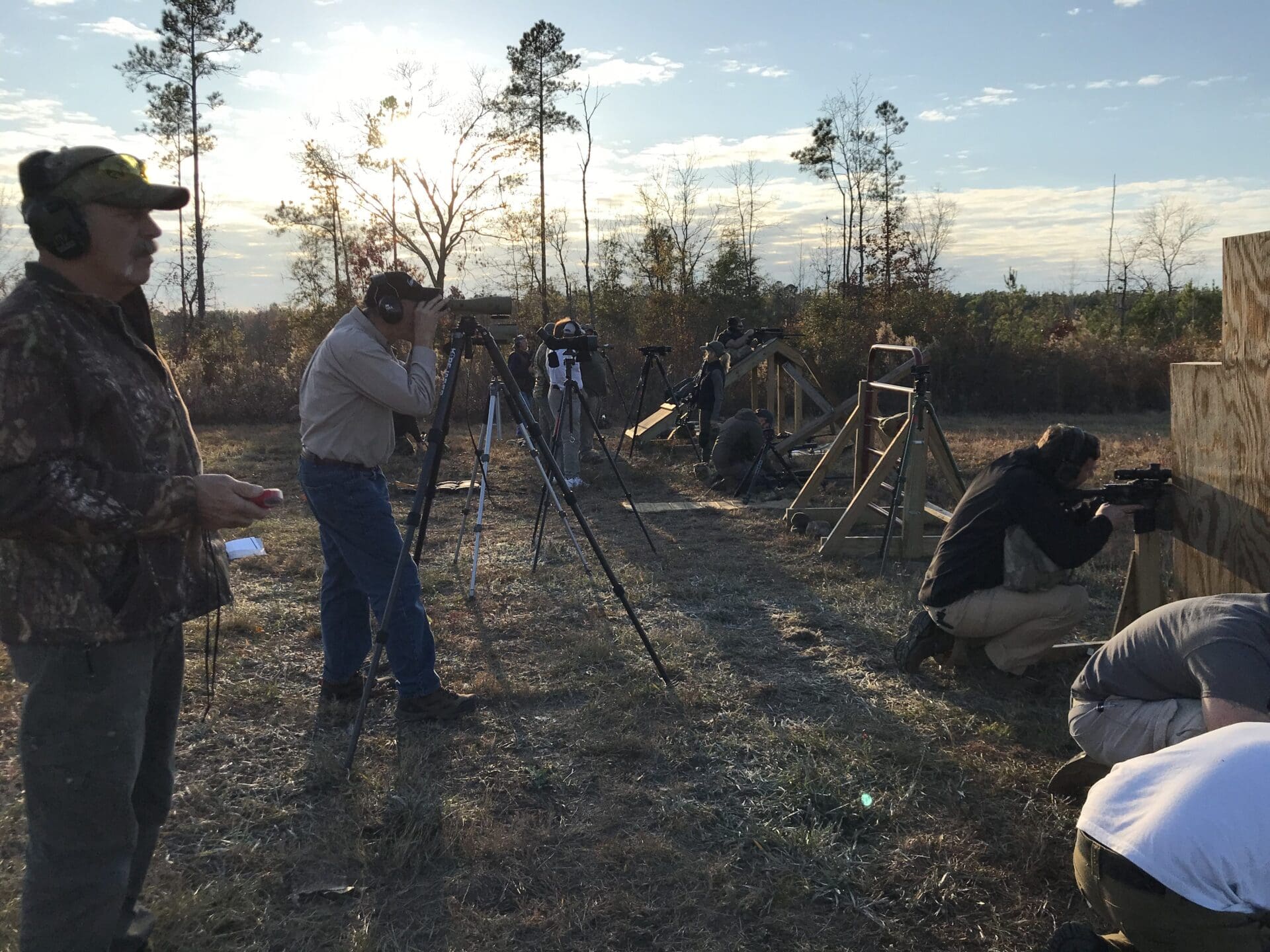
The day ended with an hour’s drive home. As we drove, I reflected on the fact that in the space of eight hours, the instructors at GTI – Legion had taken a new recruit and made him capable of hitting targets at previously unimaginable distances. I was able to impact those targets even when firing from barriers that demanded some extremely involved body contortions.
Day two would present a different array of challenges – wind variation around buildings and weird and wonderful shot angles. However, as we drove, I relived hearing Chris, positioned behind his spotting scope repeatedly call out “impact!”
Unless otherwise noted, all images are courtesy of David Young.
Mike Arnold writes about firearms and hunting at his blog Mike Arnold, Outdoor Writer.





Real riflemen were laughing their asses off when they see these pictures. I ask you “What did you notice from these pictures that makes one realize this school is for people who want to play weekend sniper but will never even learn the basics of real rife marksmanship”?.
Well have you guessed the answer yet? If you have not you are not a real rifleman.
Answer: You will never even learn the basics if you are using bi-pods standing, sitting and prone. Real riflemen can shoot without them and when they do use a bi-pod are far more likely to hit what they are aiming at then the guy who uses the bi-pod as an every day , every match crutch. In matches they should be called “cheat-o-pods”.
If you want to really become a good rifleman try NRA across the course shooting, no cheating using bi-pods from the standing position or even a sling. And no bi-pods in the sitting and prone positions either.
Training wheels on bicycles are for kids first learning to ride not men and ditto for cheat-o-pods.
What a self righteous ass. Ain’t you some kind of special, “Real riflemen” all had to start learning somewhere, you tool. The author was conveying that he needed additional training and how and where he went about getting some. Not how super special (like you are) he is compared to lowly backyard plinkers. I’m sure some “Real Riflemen” would laugh in your face for using a scope for anything shy of a mile. I mean if you can’t do it with iron sights you should just turn you gun in and give up shooting all together. What a POS
And what makes you such a “real rifleman“ rubicon? Go ahead and post a bunch of lies about how hard you are now. Pretty sure your also just another Vlad troll bot profile judging by your other ramblings about President Trump.
Moron
One rifleman to another: “You’re not a real rifleman.”
Methinks thou dost protest too much….
Well, I am a real Rifleman (a title awarded to me courtesy of the USMC) and I have shot NRA High Power with a NM M1A.
I read the article, looked at the pictures and thought, well that is interesting.
Shooting in combat, shooting for competition, or shooting, well, just for the fun or sport of hitting a 12×18 target from far away, they are all different aspects of shooting aka marksmanship.
If I had the funding for some of the equipment listed, I would attend a class like this. But it might be down the list, as there are a few Gunsite Academy courses would have a higher priority for me. That is just me though.
Side note: Liked that I saw one of them was using a Magnetospeed chrony. I have the V3 model. I like mine. I know, LabRadar is all the rage right now. But I like that I dont have to have a laptop/tablet/smartphone or “download the app!” I dont want to download an app, and whatever else data someone may or may not be piggy backing off of. That is just me.
Guess how I know you’re not a real rifleman.
Who the hell ordained you as a arbiter of what a real rifleman is? I’m a former Army grunt that’s been to the Army’s cool shooting school, and people like you are the exact morons that get drummed out because of your substandard intellectual capability.
I have not been to this course, but it is sure does look like a solid course that is dedicated to people who want to get a better handle on shooting for range no matter what their background. Who are you to criticize people for learning to handle their weapons better?
You’re nothing more than a punk.
You know all that training and equipment is great but where I live a range finder is good so you can mark off a few places around your stand to know approx. distance when you are hunting white-tailed deer because in north-central Fl. not many places to shoot long-range We are in woods and swamps etc unless you have a big farm to hunt on
USMC basic marksmanship…1969
–M-14 rifle
–200 meters standing
–300 meters sitting
–500 meters prone
–iron sights
What’s your point?
Back in my day whipper snapper we called them yards not meters.
And 18 year old eyes.
Continental Army basic marksmanship 1776.
– .69 or .75 caliber smoothbore musket
Man size target 100 yards max.
Bead sight.
Bs..
After reading some of the comments, I think some missed the point all the way, others part of the way and it really won’t matter what I say but well here goes.
1st it was a military oriented course for long and mid range shooting. 2nd most miltary, law enforcement snipers will have good equipment available to them. More power to civilians who can afford it. 3rd it was a course to learn only the basics of long distance shooting to learn the proper use of equipment needed to do it better. This was not a jungle or bush course made for survival. And most of these people will never iron sight 600 0r 800 yard shots becouse they won’t have to. And i also beleave that those who took this course, or at least most of them are profeciant enough in the woods and brush to iron sight shoot when need. Where i live scopes are not recomended becouse most shots won’t go past 100 yards do to brush and trees. And I’m willing to bet most of those good folks who grew up hunting had pretty much the same conditions. This course was to take them into a new realm of shooting. And I’ll guaranty that those real rifle men (lol) are very profeciant using this kind of equipment also. And you can bet no military sniper would iron sight a kill in a combat setting unless that was the only option left. Same as law enforcement. Their job is to get it done with the most effective way possible.
Most of all the stuff the in this course will also help translate to iron sight shooting as well. You just have to be smart enough to make the correlation and use the skills taught.
Come on, why all the negativity? A guy went out and shot some guns with other like-minded people, and wrote about ‘his’ experience, doing something new to him, in the shooting sports, and you jackholes berate him for it. Seriously, grow the fuck up.
That’s kind of what all internet gun content has become that last few years. Shit posting, bashing, and trolling everything.
Summary:
Any gun blog post: “Hey check out this rifle”
Comment section: “What retard would buy such a shitty rifle”.
Exactly.
I for one would love to take this course. It won’t ever happen but good on the author for doing this.
A lot is probably jealousy also and I’d be willing to bet that if they did take this course that when they were on the line there would be no, “You’re not a true rifleman” BS.
Enjoy shooting and quit worrying about what anyone else is doing.
Good info, Thanks. I am always interested in improving my skills, particularly as I am getting older. The Patrol Rifle, CQB and Urban Movement Techniques look like interesting/ fun classes to me. Meet some new folks, use my brain a bit and put some rounds down range. What’s not to like?
Mike, I look forward to the write up for day two.
I enjoyed this and have very fond memories of a course I got to take in Texas not long ago (with Tyler, writer for TTAG)
Having a quality instructor give pointers, tips, hints, and just plain go hands on to help the student improve is worth tons.
I’ve found it very helpful to review my notes from class and get out for some long range plinking.
(Oh, and ignore the negative comments here. Some folks are just mean)
If I could afford it I would attend. This looks like a big dollar course.
Sounds like you had a good time and brushed up on some fundamental skills. I’ve had similar experiences with other instructors at other schools.
If the distance and time investment isn’t too much, may I recommend that you attend Boomershoot (boomershoot.com) next year? I haven’t gone in a couple years, but where else do you get to shoot at reactive targets (like Tannerite, but better) in .5 MOA targets at up to about 750 yards? Weather can range from 70 degrees to snow with a full value 20mph wind. Site is in central Idaho and is beautiful. Joe’s been running this event annually since the early 2000’s. It’s great fun, and lets you test out your skills and equipment (and importantly, your spotter/shooter communications!).
You guys and your smokeless powders….
Sounds like a good time. Plus, learning is always good. If I could afford to take a class like this, I’d be there in a heartbeat.
I found the note about bringing the rifle close to the center of the chest interesting. Once upon a time, back in the day of curved brass and steel butt plates, the rifle was actually braced against the arm, not the shoulder pocket. Shooting one of those rifles or muskets against your chest would cause some serious pain!
Do you own this gun James Campbell?
Good for this guy, back in the day of the SEA war games, Scopes were very expensive. In the Military mostly snipers used them, however I did see some incredible shots with Iron sights at about 600 Yards! I too think that having the butt stock of a .338 close too the chest is going to hurt. being old and fragile even an 06 recoil is punishing, especially after 20 rounds or more
I did a precision rifle course at Sig Academy with instructor Dave Hinkel and he taught the same practice of keeping the rifle close to the centerline, when you are prone.
Nice article, glad you had a good time in the class and learned things. That is what it is about, having fun and learning something.
Ignore the haters as it is pretty clear the fellow talking smack about a NRA across the course match being the real thing has no clue and probably has never shot one. Different game, different targets, etc. Different if you are shooting service rifle versus match rifle. And today in service rifle you can use to a 4.5 power scope. Many of the top competitors this past year had such scopes.
Glad to see there are instructors teaching good basics out there too. Thanks again and looking forward to a write up about day 2. Angle shooting is eye opening.
First off, this was a very interesting article about shooting at long range. And some shooters, such as Rubicon, really missed the main idea. It was an article about a guy is primarily a hunter who spent an interesting weekend with other shooters practicing shooting at long range, and having a good time. And why all the BS about using a bipod? As a hunter with over 55 years experience in the field chasing deer and elk, I still remember one of the first rules of hunting I learned as a kid, and that is to make a clean kill with the first shot. And if that means using a bipod, shooting sticks, stable sticks, tree branch, fence post, or whatever in order to make a clean kill than use what is available. Some of you “real riflemen” need to lighten-up. I for one enjoyed the article and hope some day to maybe be able to spend a weekend at such a facility.
Sounds like a good time. Plus, learning is always good. If I could afford to take a class like this, I’d be there in a heartbeat.
مشکلات دوران نوجوانی
Comments are closed.